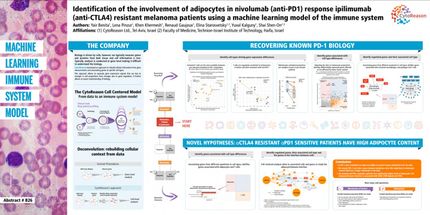Multiple Myeloma Research Consortium Launched as New Model to Accelerate Drug Development for Blood Cancer
First North American Consortium to Integrate Four Leading Research Institutions with Unique Customized Tissue and Data Banks
The multiple myeloma Research Consortium (MMRC), a first-of-its kind non-profit organization that integrates four leading cancer research institutions, was announced on Tuesday. The MMRC is the only consortium to join academic institutions both through membership agreements and customized IT systems. MMRC-affiliated institutions will focus on the identification and validation of molecular targets for multiple myeloma, the discovery of drugs against these targets and expediting the early phase trials of these drugs. The ultimate goal of the new Consortium is to rapidly advance the drug development process and find a cure for multiple myeloma.
Founded by Multiple Myeloma Research Foundation (MMRF) President Kathy Giusti, this innovative model, which was funded by a grant from the MMRF and developed in collaboration with PricewaterhouseCoopers, will provide these institutions with the ability to share their expertise and research data to accelerate the testing of new, lifesaving therapies and eliminate much of the duplication that is now prevalent in the drug discovery process.
MMRC Member Institutions include Dana-Farber Cancer Institute, H. Lee Moffitt Cancer Center & Research Institute, Mayo Clinic and University Health Network (Princess Margaret Hospital). These institutions were selected based on their National Institutes of Health grant awards, number of peer-reviewed publications, clinical expertise, and a collaborative approach to science.
Multiple myeloma, a cancer of the plasma cell, is an incurable but treatable disease. There are approximately 50,000 people in the United States living with multiple myeloma and each year an estimated 11,070 people die from the disease. Multiple myeloma is the second most prevalent blood cancer after non-Hodgkin's lymphoma.
"Despite recent successes in treating some myeloma patients, myeloma remains an incurable disease. With a five-year survival rate of only 32%, new therapies are urgently needed," explains Kathy Giusti, President of the MMRC, who is also a multiple myeloma patient. "We recognized that there was a major disconnect in the research and drug discovery process because institutions are not easily able to quickly and accurately share necessary data on corresponding projects. The MMRC will allow them to unite their research to speed target identification and drug development."
The MMRC sets itself apart with the creation of the MMRC Tissue Bank, which will serve as an invaluable resource of tissue and corresponding clinical and genomic data necessary develop new, targeted therapies. All samples maintained within the Tissue Bank will be collected, analyzed, and stored in adherence with government-regulated Good Laboratory Practice standards. This centralized repository will enable scientists from academia and industry to identify and validate molecular targets for multiple myeloma and drugs active against these targets, as well as to more quickly determine a patient's response to existing drug therapies.
"By having one source of genomic data and tissue samples that have been uniformly standardized, as well as an integrated validation and multi-center clinical trials system, this will reduce the drug development process by months and possibly years. This should help us to bring more specific and hopefully more effective drug treatments to patients more rapidly," explains Kenneth Anderson M.D., chairman of the MMRC Leadership Team.
Complementing the MMRC Tissue Bank is the MMRC Data Bank, a state-of-the-art system that integrates laboratory and clinical trial data into one common interface, allowing researchers to effectively conduct early phase trials with a focus on correlative science. MMRC Member Institutions will conduct research in three multi-site research cores: Genomics, Validation and Clinical Trials that will remain highly integrated. The customized infrastructures at the MMRC were designed by IBM Life Sciences and First Genetic Trust to ensure the seamless transfer of tissue and data across multiple institutions.

























































